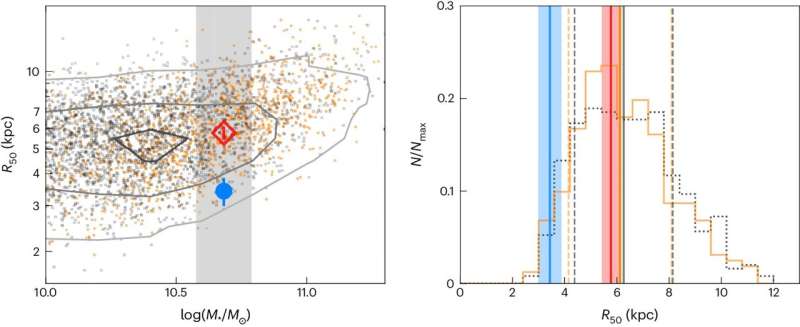July 3, 2024 report
This article has been reviewed according to Science X's editorial process and policies. Editors have highlighted the following attributes while ensuring the content's credibility:
fact-checked
peer-reviewed publication
trusted source
proofread
New models suggest Milky Way is not as packed with stars as previously thought

A small team of astronomers from Yunnan University, the University of Utah, New Mexico State University, and the University of St Andrews has created a new model of the Milky Way galaxy based on the results of their census of red giants.
In their paper published in the journal Nature Astronomy, the group describes how their model showed that there may not be as many stars in the galaxy as has been thought.
As the research team notes, our solar system resides on one arm of the Milky Way galaxy, quite a distance from the galaxy's bulge and supermassive black hole believed to be at its center. Such a vantage point, they note, makes it very difficult to accurately discern its structure.
Estimates of its structure have been based on estimates made of the number of stars in various parts of the galaxy and then making guesses based on the structure of other galaxies. For this new study, the research team has attempted to make such guesses more precise by first conducting a more accurate census of red giants and using that data to build a model to estimate the shape and size of our galaxy.
To conduct their census, the team used a variety of techniques to process the data from the Apache Point Observatory Galactic Evolution Experiment, which allowed them to count the red giants that are normally obscured by interstellar dust. That way, they were able to get a more accurate count (close to 250,000) and also to place the red giants more precisely. And that allowed them to get a better view of their distribution, most particularly in the bulge around the galaxy's center.
After adding the data to their model, the research team found that the density of red giants tended to level off near the midway point between the edges of the galaxy and the bulge; a finding that differs from prior models, most of which had them increasing exponentially.
This finding, the researchers suggest, shows that the bulge is not as dense as has been thought. They also found that the galaxy's half-light radius is roughly twice as large as has been estimated in prior research efforts.
The work by the team shows that the stars in the galaxy are more spread out than has been thought, which further suggests that there may not be as many of them as has been conjectured. And if that is the case, it would mean that the Milky Way galaxy has less mass than previously calculated, which would mean it might hold more dark matter than previous estimates have shown.
More information: Jianhui Lian et al, The broken-exponential radial structure and larger size of the Milky Way galaxy, Nature Astronomy (2024). DOI: 10.1038/s41550-024-02315-7
Journal information: Nature Astronomy
© 2024 Science X Network





















